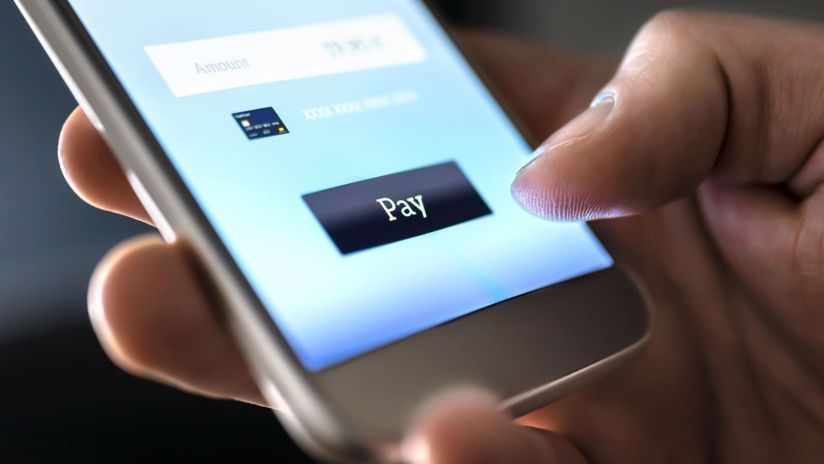Payments security for small businesses
Understand the importance of payments security when accepting cashless payments. In this article, we discuss some practical tips to help safeguard your small business transactions.

The shift to digital payments
Cashless payments have become an integral part of daily life. Offering your customers flexible and convenient ways to pay, can help boost your sales and improve customer experience.
While advances in payments technology bring convenience and other benefits to you and your customers, they can also bring with them risk of potential fraud and other security concerns like data breaches. Something currently top of mind for big and small businesses is payments security. This applies to business owners and customers alike.
What is payments security?
Payments security comprises the different steps and measures taken to help protect your privacy and data. This can include customer and client data that’s registered, transmitted or processed, when a transaction takes place.
Why is payments security so important?
Payment and security should go hand in hand for small businesses. Being able to facilitate a secure payment and checkout experience, can help you:
- Safeguard your business’s sensitive financial information
- Safeguard your customer’s sensitive financial information
- Protect your customer’s privacy
- Maintain customer trust
- Maintain buyer confidence
- Protect your business’s public reputation
- Give you peace of mind.
It’s important to understand the benefits of payments security. And it’s equally important to understand the potential consequences and risks. This knowledge can help you better appreciate the need for robust security measures.
Tips for managing payments security
Choosing the right provider
Choosing a reliable payments provider is the first step when it comes to payments security. We recommend looking for a provider that can offer vigorous security measures. Here is a list of things to look for:
- Secure PIN entry and transaction security
- Secure systems and applications
- Data encryption
- Tokenisation
- Fraud monitoring, detection and prevention
- Multi-factor authentication
- PCI compliance
- Network security
- Regular vulnerability scans from your payments provider.
Opting for a reliable and reputable provider will help give you peace of mind, as well as help protect your business from potential threats. Look for device features such as those listed above that are designed to help protect the privacy and security of your transactions.
Consider where data is captured and processed when transactions take place, particularly customer card and any personal data. Make sure you’re clear on where any data is being stored, for how long, and who will have access to it.
Training and upskilling on payments security
People are an important frontline in maintaining a strong payments security. Offering comprehensive training or upskilling on best practices can serve your business well. It can help you mitigate issues that could potentially arise from cashless payments.
Below, we breakdown some of the ways you can help protect your business:
- Completing training and regular refreshers. This can help you identify suspicious or fraudulent transactions
- Staying up to date with emerging trends, technology and advancements in the payments landscape
- Creating business protocols around payments and account access. And regularly communicate these protocols and processes with your team
- Educating yourself about common scams and risks
- Developing a cyber secure mindset and building a proactive culture of awareness with payments security top of mind
- Making sure that your terminals are kept at a secure location and are under close supervision at all times. And ensuring only authorised employees have access to your terminals
- Checking your business premises regularly to ensure there are no new or unknown electronic devices connected to or close to your EFTPOS terminal. For example, this could be hidden cameras, or card readers/skimming devices.
Stay proactive when it comes to education around accepting cashless payments.
Regularly monitoring business transactions
Make sure you have systems in place to regularly monitor your business transactions. This can help you identify any suspicious activity fast.
It’s important to keep an eye out for unusual activity such as:
- High transaction volumes
- Repetitive purchases
- Transactions from unfamiliar locations.
If you do notice anything strange or out of the ordinary, contact your payments provider immediately.
Some payments solutions offer real-time reporting and notifications. These types of monitoring tools can help you stay alert, aware and vigilant. Plus, they allow you to quickly respond to any potential threats before it’s too late.
Digital payments with more confidence
Embracing cashless payments can help improve convenience and efficiency for both you and your customers. By using a trusted provider and taking proactive steps to enhance your payments security you can help protect your business from potential threats. This will empower you to confidently navigate the cashless landscape while helping you keep your data safe.
Cyber security and your business
Insights to help you review your cyber security strategy and help you protect your business and customers.
Explore more on this topic
Help protect your business from cyber threats
Enhance your digital security on up to 15 devices and help make doing business online safer.




